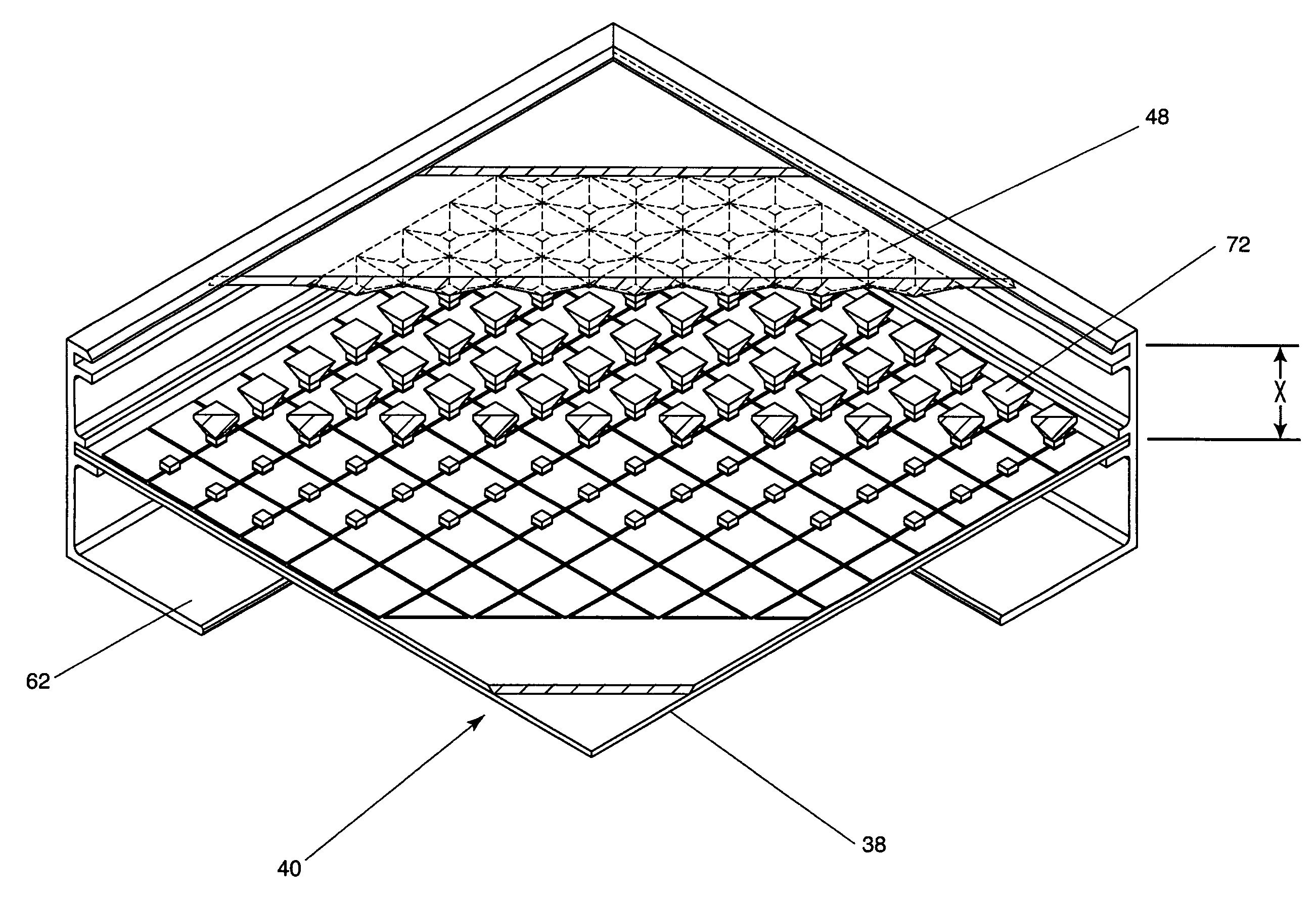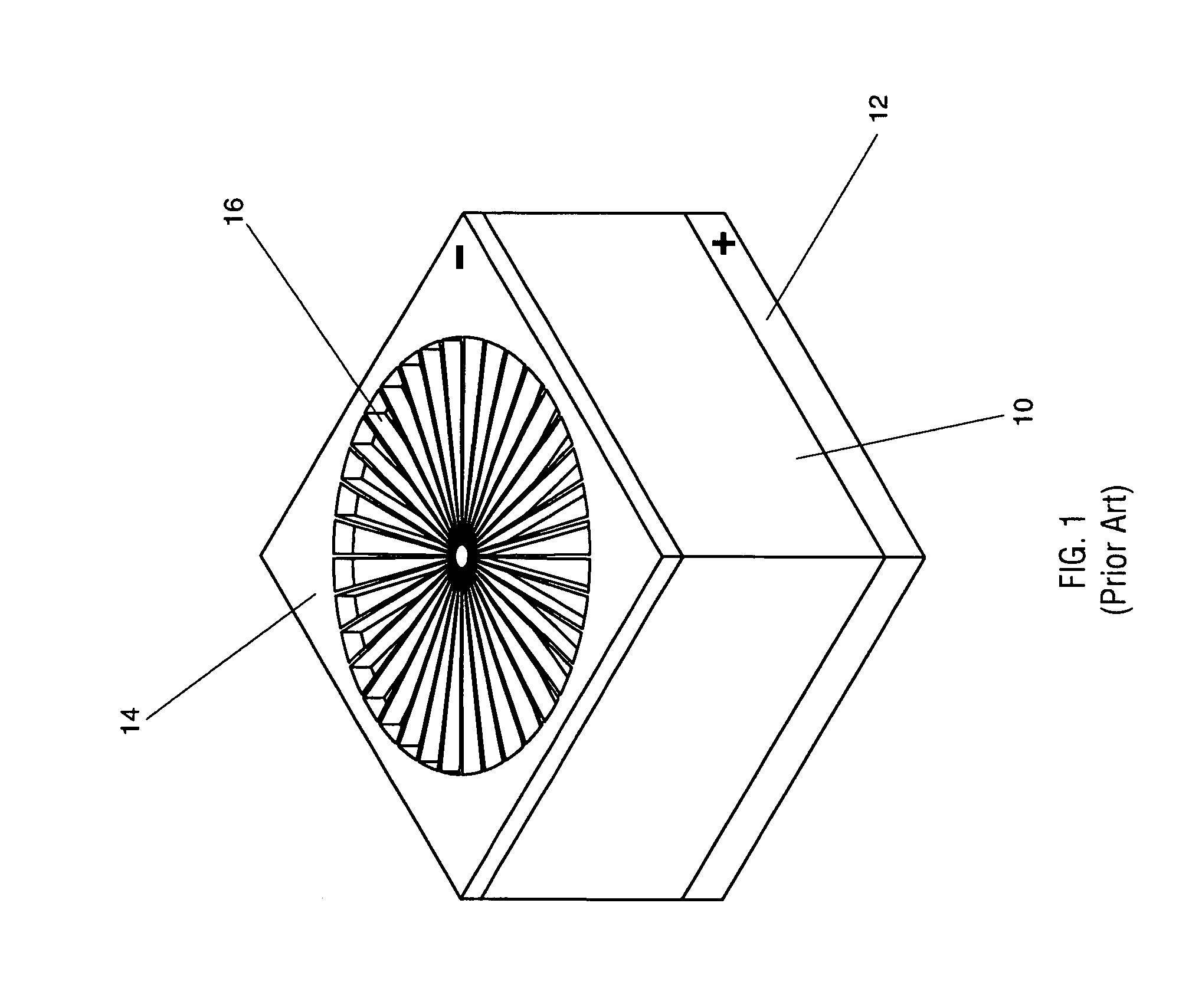Fly's Eye Lens Short Focal Length Solar Concentrator
a solar concentrator and fly-eye lens technology, applied in the field of photovoltaics, can solve problems such as reducing cell efficiency, and achieve the effect of efficient and economic heat dissipation from many small pv cell sites
- Summary
- Abstract
- Description
- Claims
- Application Information
AI Technical Summary
Benefits of technology
Problems solved by technology
Method used
Image
Examples
Embodiment Construction
[0032]As shown in FIG. 2, solar cells used in the assembly of one aspect of the present invention are pre-fabricated rectangular or square photovoltaic semiconductor crystal wafers or PV cells 20 having a photoactive top surface 22 and a dual electrode conductive rear surface 34. Each wafer may be approximately 25 millimeters square and fabricated from material such as silicon, known to have photovoltaic properties.
[0033]Bonded both mechanically and electrically to the rear cell conductive surface 34 are two rear conductors, one positive 24 and one negative 28, which are separated by a void 30 in the conductive surface 34 and readily permits the cell to be electrically joined to printed circuit laminate substrate portion of the module.
[0034]FIG. 3 shows the receiver sheet assembly of a power module of an aspect of the present invention. Receiver sheet assembly 32 includes a plurality of photovoltaic (PV) cells 20, electrically and mechanically disposed on the top surface of laminate...
PUM
| Property | Measurement | Unit |
|---|---|---|
| Time | aaaaa | aaaaa |
| Thickness | aaaaa | aaaaa |
| Length | aaaaa | aaaaa |
Abstract
Description
Claims
Application Information
 Login to View More
Login to View More - R&D
- Intellectual Property
- Life Sciences
- Materials
- Tech Scout
- Unparalleled Data Quality
- Higher Quality Content
- 60% Fewer Hallucinations
Browse by: Latest US Patents, China's latest patents, Technical Efficacy Thesaurus, Application Domain, Technology Topic, Popular Technical Reports.
© 2025 PatSnap. All rights reserved.Legal|Privacy policy|Modern Slavery Act Transparency Statement|Sitemap|About US| Contact US: help@patsnap.com



